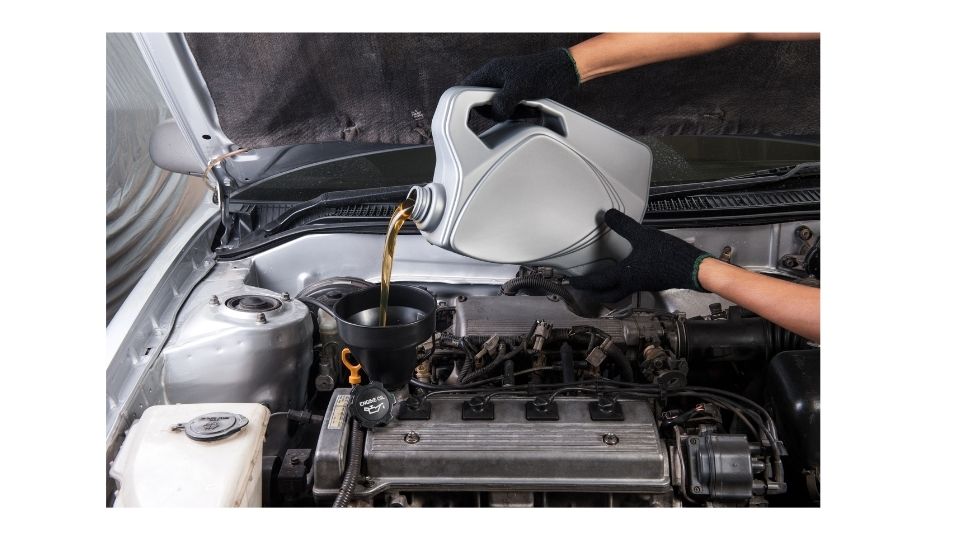Engine oil is an integral part of your car’s operation. If there is no oil in your vehicle, it will lead to catastrophic engine failure. It is therefore important for the engine to always have sufficient levels of oil in it at all times.
The main purpose of engine oil is to lubricate the metals inside the engine so that they don’t rub against each other which leads to the metals corroding.
It’s pretty obvious to most people who understand the workings of an engine what the effects of insufficient levels of oil are. What are the effects of putting in too much oil in your car though? Well, it depends and that’s what this article is going to be looking into.
in Short, The impact of overfilling your engine with oil will be dependent on how much extra oil you put in the engine. Any amount below or up to half a quart will not lead to any harmful effects on your engine. If you put in more than that amount though, you will need to take corrective action.
What Happens When you Overfill an Engine With More than1 Quart of Engine Oil?
To get a better understanding of the effects of too much engine oil, we will need to look into what exactly happens when you overfill. Engine oil sits in the oil pan located in the engine block.
When the engine is started, the oil begins to be pumped around the engine to lubricate it. The oil pan usually sits just under the crankshaft. As the engine runs, the crankshaft spins at a rapid speed.
If the oil levels in the pan is too high and come into contact with the crank shaft, it will be beaten into a froth. The oil is then unable to properly lubricate the engine properly because of the air bubbles.
This leads to a number of problems which we will list below
- Reduced Lubrication from frothy oil The engine will not be lubricated properly leading to corrosion as the metals rub against each other. If left unattended, you will eventually experience engine failure.
- Failing Gaskets and Seals Another thing that will result from too much oil is pressure build-up which then puts strain on the seals and gaskets in the engine. This leads to oil leaking into other parts of the engine including the combustion chamber.
- Spark Plug Failure If oil leaks and coats the spark plug it may prevent the forming of a circuit as it is not a conductor. This leads to complete failure or a misfiring engine in cases where a few spark plugs are affected.
How to Tell if You Have Too Much Oil
The simplest way is to check your dipstick. Normal oil levels should be under or just around the full levels. If your levels are over, you have too much.
Once again, if the levels are half a quart over the limit, there isn’t much to worry about. If it is over that limit, you need to take action in order to fix this problem.
Before we get to that though, let’s look at other signs of excess engine oil that you should be aware of.
Blue Smoke
If you see blue smoke coming from your exhaust pipe, it’s a sign that your car is burning oil. When you see this, check the oil levels and take action to correct the problem.
Burning Oil
This can be smoke coming out of the engine or exhaust. Too much oil may actually end up damaging your catalytic converter which is responsible for cleaning up the excess pollutants and impurities from engine fumes. When this happens, you will need to have it replaced and it’s very expensive to doo that.
How to Fix the Problem of too Much Oil
If you realise that you or the repair shop have put in too much oil in your car, there are a few things that can be done. If the levels are low, you can use a syringe and hospital tube to suck the excess air out.
T do it, you need to insert the oxygen tube through the dip hole. Push it all the way into the oil pan then use the syringe to suck out the oil. This method will not always s work though. When you encounter this, you will need to drain the oil out from the bottom of the car.
To do this, place a drain pan under the oil plug underneath the car. Carefully remove the cap, drain the excess oil out and then close it again. Be careful to do it properly as it is quite a messy job. Once you do this, check to make sure that the oil is at the right levels. If not, add or drain oil accordingly.
If the problem had been allowed to run for too long though, you may need to drain all the oil out and put in new oil and a filter. This is because the old oil and filter would have been contaminated by the metal shavings and other contaminants from the engine.

Robert Anderson is a world class motorhead who rebuilt his first carb at age 10, his first engine at age 15, and completed his first full hotrod build when he was just 18! Previously, he has ran a part warehouse, delivered pizzas, and managed the service department for a $20 million/year revenue dealership. Robert knows cars like few others and he is passionate about sharing his knowledge.

